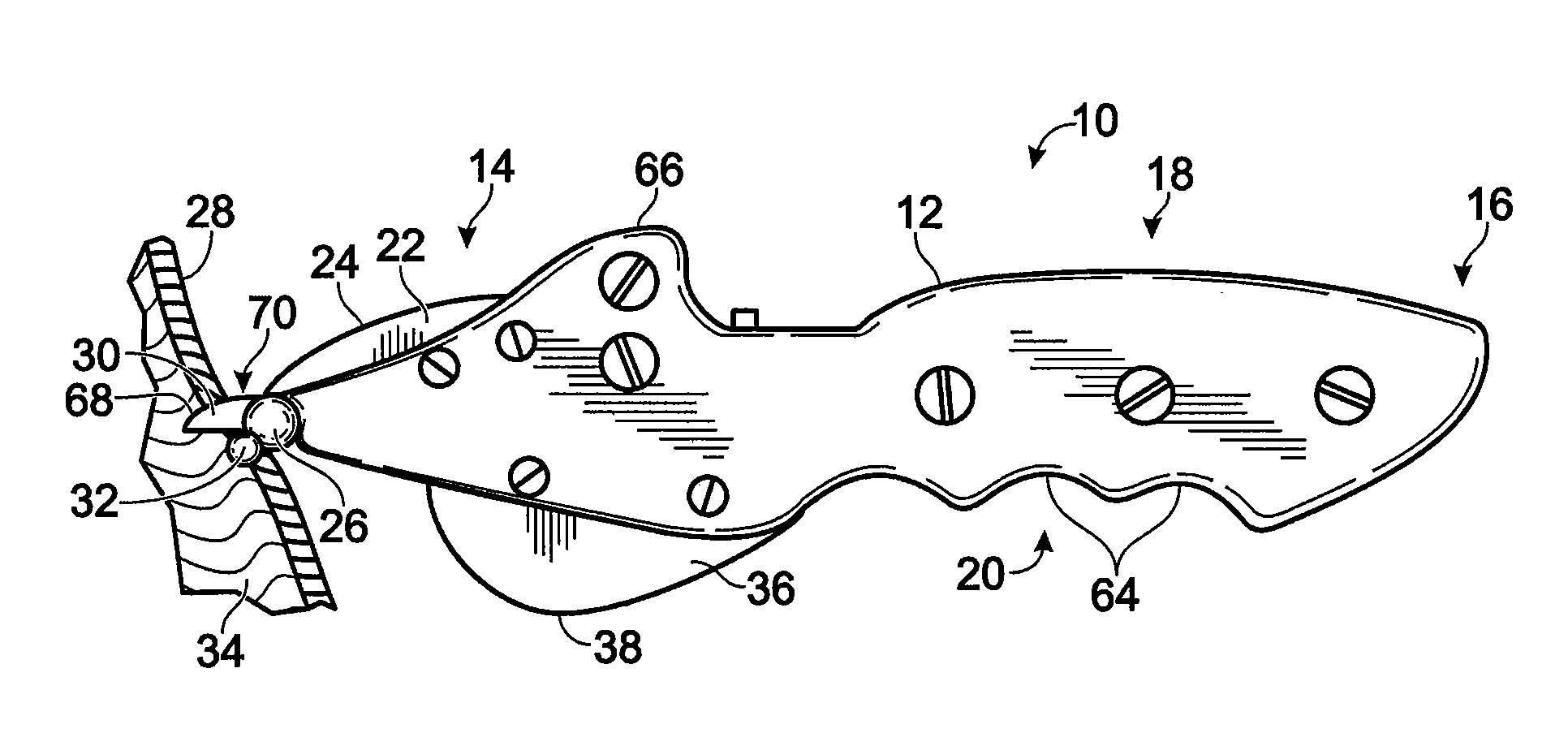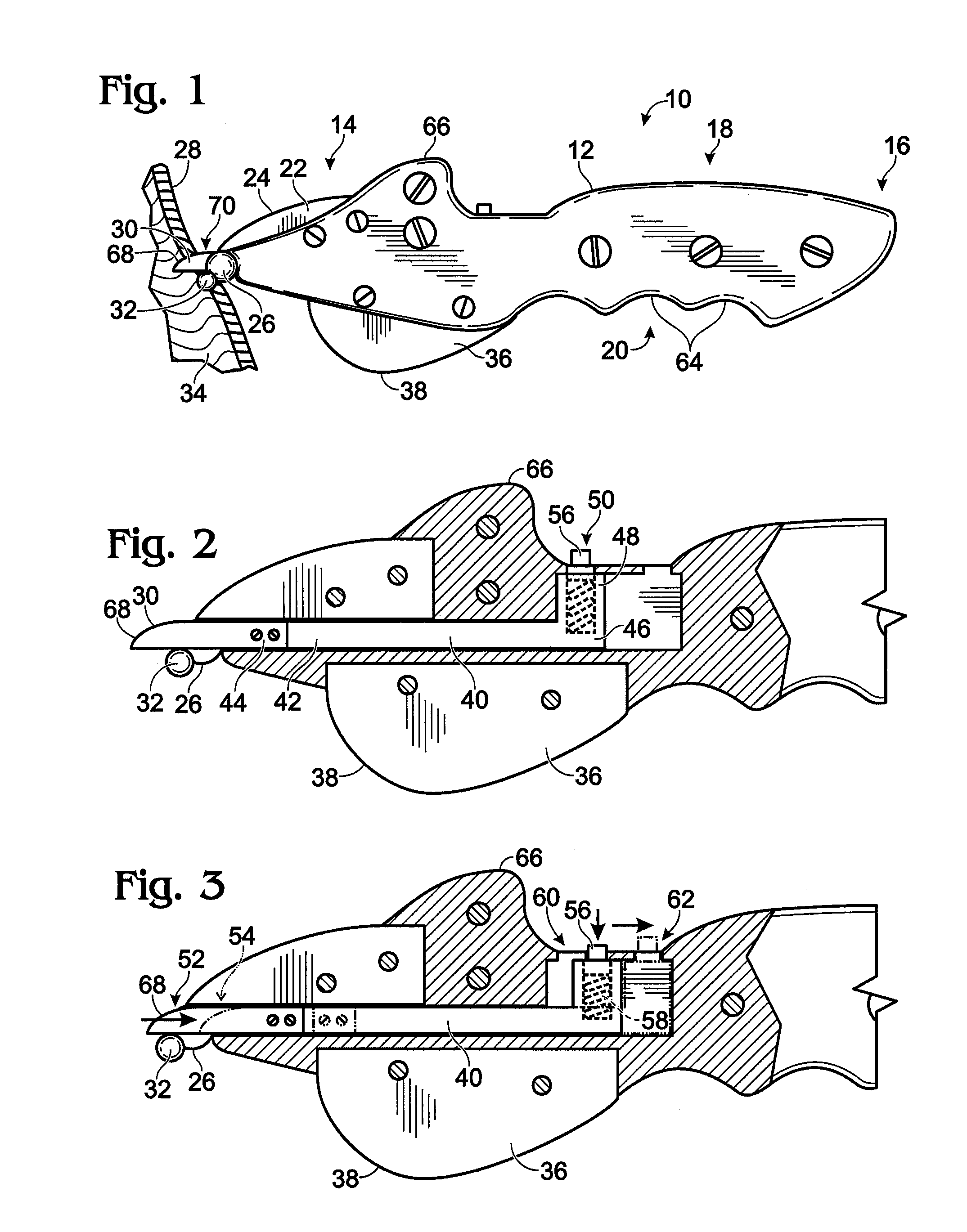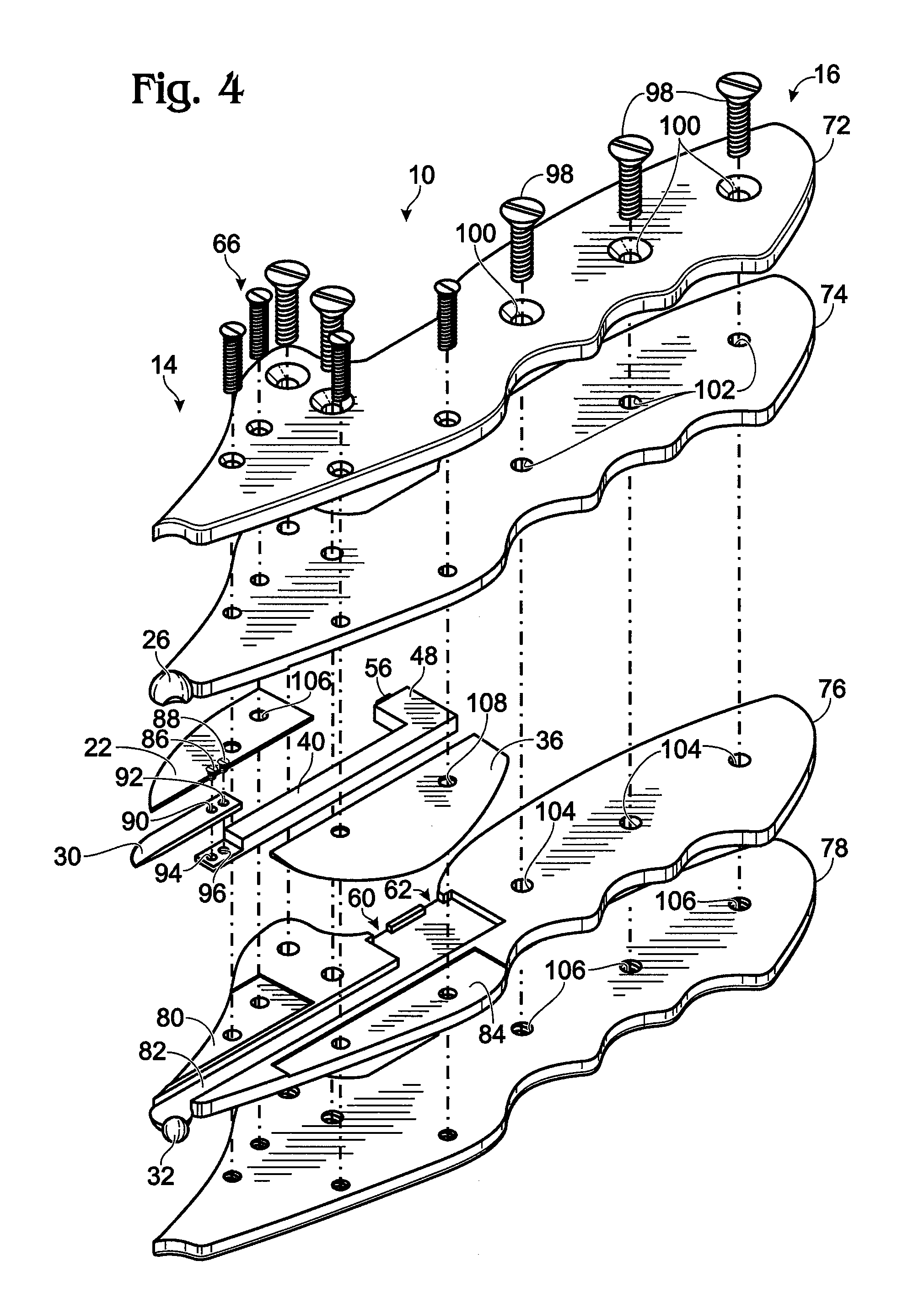Skinning knife
a technology of skinning knife and blade, which is applied in the field of skinning knives, can solve the problems of difficult tasks, device use difficulty, and too many awkward use, and achieve the effect of limiting the scope of invention
- Summary
- Abstract
- Description
- Claims
- Application Information
AI Technical Summary
Benefits of technology
Problems solved by technology
Method used
Image
Examples
second embodiment
[0025]a skinning knife 110 according to the present invention is shown in FIGS. 5, 6 and 7. In this case there is only one multi-purpose blade 112 that has an upwardly- and forwardly-directed cutting edge 114 so as to cut material encountered as the knife is thrust forward. The multi-purpose blade 112 is attached to a handle 116, with a hand guard 118 disposed there between. The handle has a first outer grip 120 and a second, mirror image outer grip (not shown) which cover a blade shank 122 and are attached to the shank by screw 124.
[0026]This embodiment also has a first spreading member 126 and a second spreading member 128. However, in this case, the two spreading members are attached to an actuation shaft 130 that is used to place the spreading members at the forward most tip 132 of the knife, or retract the spreading members to a rearward position 134. As in the first embodiment, the features of the first spreading member and the second spreading member could be combined into a ...
embodiment 110
[0027]In use of the second skinning knife embodiment 110, the spreading members are initially retracted so that the tip of the multi-purpose blade can be used to punch a hole in the hide of an animal that has been sacrificed. Then, the spreading members are moved to their forward most position so that, as the blade is used to slit the hide, the two separated parts of the hide are spread. Finally, when a sufficiently long slit has been made in the hide, the material spreading members are again retracted and the multi-purpose blade is used to separate the hide from the meat.
PUM
 Login to View More
Login to View More Abstract
Description
Claims
Application Information
 Login to View More
Login to View More - R&D
- Intellectual Property
- Life Sciences
- Materials
- Tech Scout
- Unparalleled Data Quality
- Higher Quality Content
- 60% Fewer Hallucinations
Browse by: Latest US Patents, China's latest patents, Technical Efficacy Thesaurus, Application Domain, Technology Topic, Popular Technical Reports.
© 2025 PatSnap. All rights reserved.Legal|Privacy policy|Modern Slavery Act Transparency Statement|Sitemap|About US| Contact US: help@patsnap.com



